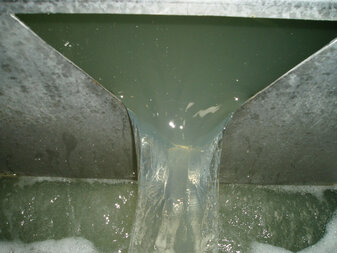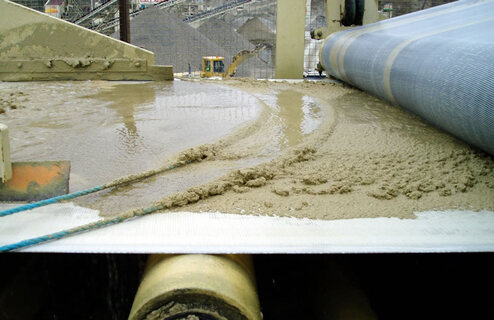belt filter press
|
Filter presses are used for sludge treatment. Filtration is the most widely used method in the treatment of sludge produced by wastewater treatment. It can consist just in drainage though sand beds or it can be mechanical under vacuum middle or high-pressure conditions which require more sophisticated equipment.
|
|
Sludge management can be a dirty old job, but with the right technology and inside industry experience like you get from us it doesn’t have to be. GPC Clear Solutions’ belt filter press or belt press systems cleanly manage the entire process through automated stages of chemical preparation, gravity thickening, and belt pressing.
|
Constructed of stainless steel and high-grade plastics, belt filter presses are extremely resistant to fouling and corrosion. While many competitive dewatering systems employ linear designs, these systems are built with their dewatering zones stacked vertically, so equipment takes up less floor space.
How a typical Belt Filter Press works
Before sludge enters the press it is chemically conditioned for dewatering with an emulsion polymer flocculant that helps form stronger flocs. After chemical conditioning, a transfer pump drops the sludge onto a preliminary dewatering belt where free water molecules separate by gravity and fall into a collection trough.
As sludge is conveyed along the belt, ploughs roll it around to help water drain out. Before dropping down to the next stage, guide plates help position the sludge towards the middle of the belt ensuring nothing is squeezed out the side of the filter. After this, a second gravity thickener repeats the process before sludge is fed into a pressing zone.
Upon entering the pressing zone, sludge is sandwiched and squeezed between two belt filters which slowly convey over and under rollers that force excess water out of the sludge and through the filter mesh.
Finally, the pressed sludge is scraped off the belt and collected in a bin. All filtrate and wash water is then captured and transferred back to the front of the wastewater system for re-processing.
Before sludge enters the press it is chemically conditioned for dewatering with an emulsion polymer flocculant that helps form stronger flocs. After chemical conditioning, a transfer pump drops the sludge onto a preliminary dewatering belt where free water molecules separate by gravity and fall into a collection trough.
As sludge is conveyed along the belt, ploughs roll it around to help water drain out. Before dropping down to the next stage, guide plates help position the sludge towards the middle of the belt ensuring nothing is squeezed out the side of the filter. After this, a second gravity thickener repeats the process before sludge is fed into a pressing zone.
Upon entering the pressing zone, sludge is sandwiched and squeezed between two belt filters which slowly convey over and under rollers that force excess water out of the sludge and through the filter mesh.
Finally, the pressed sludge is scraped off the belt and collected in a bin. All filtrate and wash water is then captured and transferred back to the front of the wastewater system for re-processing.
|
Why use a Belt Filter Press?
Belt filter presses are great for dewatering applications where sludge is particularly oily, or fatty. This covers most food processing and general manufacturing operations. Some great features of a belt filter press include:
|



